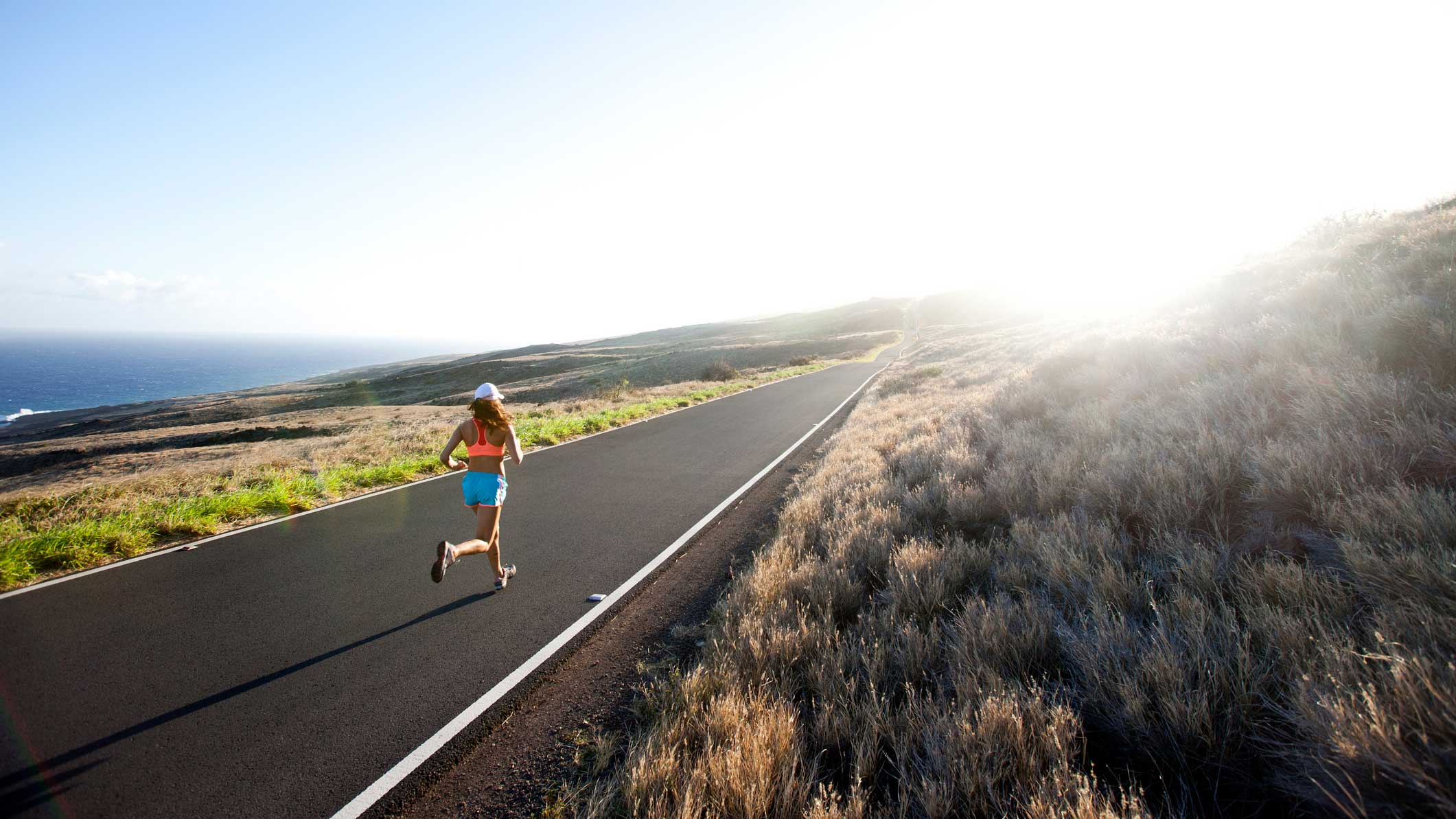Hawaii From Home: Brick Workout #1

Join us for Hawaii From Home—one week, 140.6 miles. Swag, prizes, training tips from coaches, bragging rights. Get all of the details at triathlete.com/hawaiifromhome. Each week we’ll be providing four key workouts (one swim, one bike, one run, and one brick) that you can work into your overall training plan.
Most people think of brick workouts as a bike session with a run off the bike, but there are huge benefits to doing “non-traditional” bricks—and you’ll see this pattern emerge throughout the six weeks of training for Hawaii From Home. Too many athletes get bogged down in doing long, slow, steady brick workouts that do little to boost their fitness. All of these workouts incorporate some element of HIIT work (high intensity interval training) and also see you switching from run to bike and back to run. There are a number of physiological and psychological reasons as to why I prescribe brick workouts in this way, which we’ll delve into in more detail below. This is also a tried and tested format I’ve used with pros and age-groupers alike with great success. It’s also a lot of fun!
There are two workouts below, one for the more advanced/seasoned athlete and another for a more novice athlete. Both workouts involve a run-bike-run with a variety of intensities.
With the advanced workout, after a 12-minute warm-up, you’ll run four miles and at mile two and three insert two blocks of the following: 3 x 50 seconds + 5 x 25 seconds. Take 90 seconds rest between repeats. Try to start at a rigorous pace and then hit top speed after the halfway point of each segment—then hang on! Good technique is paramount in these segments. The remainder of the run is aerobic/steady.
You’ll then transition to the bike and ride for 75 minutes. At around 20 minutes and 50 minutes, you’ll do the following: 1 x 90 seconds, 1 x 75 seconds, 4 x 35 seconds at a hard/very hard effort, starting and finishing each effort with 15 seconds out of the saddle in a bigger gear aiming for a cadence of 58-68 RPM. The rest of the session is aerobic.
It’s then time to return to your run shoes with the final run being a two-mile effort, inserting 6 x 35 seconds hard to very hard effort, spaced throughout the run. The rest should be an easy jog.
The beginner workout also involves a run-bike-run format, starting with a two-mile run with 4 x 30 seconds hard. Transition to the bike for a 45-minute ride that includes 6 x 45 seconds hard effort. Finish the session with a one-mile run, all steady pace.
Splitting the run segments like this allows a reprieve from the repetitive running overload and my preference is to build the time and distance on the run by splitting the segments. The continuous pounding of a long run off a long ride can possibly lead to an injury prior to your race. It’s also worth noting that your total run volume can go up at a faster rate when splitting the run this way versus a single run.
Adding these HIIT segments within both runs stimulates the fast twitch type 2a muscle fibers that assist the slower ones. These are vital for your Ironman race or any shorter events. These fibers must be trained and unfortunately in a typical Ironman buildup they are quite often neglected. Only undertaking long slow distances week after week, diffuses the functionality, volume, and resiliency of the mitochondria, which is not what we want to see happen. This also doesn’t prepare you well for racing when there are often huge fluctuations in pace.
Finally, the psychological element of elevated HIIT segments allows your mind and body to recognize muscular overload, elevated breathing rate, and the feeling of your body being under stress. Coming off of these segments requires solid technique and a mindful resolve that you’ll be able to rebound and recovery. In short, it’s great practice for what your body and mind will face on race day!
Hawaii From Home Brick Workout #1
Advanced – Run/Bike/Run
Run Part 1:
Warm-up
12 min. run
Main Set
4 mile run – at mile 2 + 3 do: 2 x (3 x 50 sec. + 5 x 25 sec.) at hard/very hard effort with 90 sec. rest between repeats
Remainder is aerobic.
Bike:
75 min. @ 20 min. + 50 min. do:
1 x 90 sec. at a hard/very hard effort with 15 sec. out of saddle at start and end of each effort, cadence 58-68 RPM.
1 x 75 sec. at a hard/very hard effort with 15 sec. out of saddle at start and end of each effort, cadence 58-68 RPM.
4 x 35 sec. at a hard/very hard effort with 15 sec. out of saddle at start and end of each effort, cadence 58-68 RPM. Remainder is aerobic.
Run Part 2:
2 miles to include 6 x 35 sec. hard to very hard effort, spaced throughout the run.
Remainder is aerobic.
Cooldown
5-10 min. as needed
Beginner
Run Part 1:
2 mile run with 4 x 30 sec. hard effort
Bike:
45-min. ride to include 6 x 45-sec hard effort
Run Part 2:
1 mile run, all steady.
Cooldown
5-10 min. as needed
Dave Scott is a master coach and six-time Ironman world champion who became the first person to be inducted into the Ironman Hall of Fame. He has coached scores of pro and age-group athletes to PRs and podiums based on his decades of training and racing experience. He writes a free newsletter twice monthly which covers a range of topics including training, aging, and diet—you can sign up for the next issue here. You can find out more about his Dave Scott Tri Club here and his training camps and clinics here.